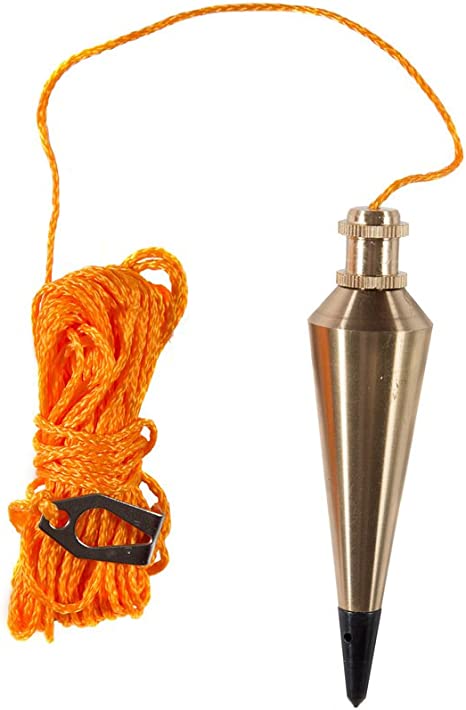The word “plumb” can be used as a verb to represent a plumber’s work installing and maintaining plumbing systems in buildings, but its most significant application is in general carpentry or construction.
Vertical features like columns, walls, and uprights must be plumb for optimal construction and load-bearing capacity, much as floors, countertops, and pool tables must be level.
What Is Plumb?
The phrase “plumb” in construction or carpentry refers to a line or feature that is exactly vertical. It symbolizes an ideal line that passes through the center of the earth in technological design. The opposite of level, which meaning to be completely horizontal, is plump.

The Meanings of Plumb
Plumb is a word that can be used as a noun, a verb, an adverb, or even a verb for architects, builders, and carpenters. It is an adverb when used in phrases like “Check the fence for plumb,” an adjective when used to describe anything that is absolutely vertical, and a verb when it refers to the process of making something plumb: “You must plumb the post before pouring the footing.”
Last but not least, the word “plumb” can also be used as a noun to describe the tiny pointed weight that hangs from the base of a plumb bob, a straightforward instrument used to mark or check for plumb.
The Importance of Plumb
A frame member or wall in a building will transfer its supporting weight directly downward (compression stress) if it is installed so that it is absolutely vertical or plumb, providing it the maximum load-bearing capacity. On the other hand, if vertical parts are not put precisely plumb, portion of the weight is off-center and might cause the member to experience a significant amount of additional stress (shear load).
All of these materials—wood studs, concrete pillars, and steel beams—have substantially higher compression strengths than shear strengths, emphasizing the significance of structural elements being plumb. Massive skyscrapers are kept upright by the immense load-bearing of steel beams that are exactly plumb-installed and experience compression load rather than shear force. A few degrees out of alignment can cause huge structures to collapse.
How to Check for Plumb
The plumb bob and the carpenter’s level are the conventional instruments for determining plumb. You can also quickly set something plumb by squaring off the level plane with a square if you’re working from a line or surface that can be independently verified to be level. Today’s builders frequently project plumb lines of light onto surfaces or structural components using laser levels.
The earliest, simplest, and still one of the greatest tools for determining plumb is the plumb bob. It consists of a weight (the plumb) suspended from a long, dependable cord. The plumb weight is always symmetrically formed to hang evenly, and it frequently comes to a point to enable precise reading and labeling. The weight is suspended from the string at a specific location by the user. When the weight is totally stationary and no longer swinging, gravity pulls the string taut, ensuring that the line the string forms is always plumb.
Frequently, two individuals are required to use a plumb bob. One person may, for instance, suspend the plumb just above the floor while holding the rope up to a mark on the ceiling or the bottom of the beam. The other person sets the plumb straight and lets it rest before marking the floor slightly below the plumb’s point. In this manner, a fictitious plumb line is made by the marks on the floor and the ceiling (or beam) being perfectly aligned.
A carpenter’s level, also known as a spirit level, is typically used to check posts, walls, and other vertical structures for plumb. Most levels feature two liquid-filled vials close to either end, and by inspecting either vial, you can determine whether the level is plumb. The vertical member or structure is absolutely plumb when the bubble in the plumb vial is properly centered within the vial. There are many different lengths of levels, ranging from the nine-inch torpedo levels to the four-foot mason’s levels. For simpler reading, digital levels are even offered.
Plumbing Posts
To determine whether a post or column is plumb, use the level on two of the post’s neighboring sides (or one-quarter of the way around a cylindrical column). It can be plumb from left to right without being plumb from front to back, which is why. Due to this, there is a practical instrument for ensuring that fence or deck posts are square. This straightforward instrument is known as a post level, and it has a right-angle frame with level and plumb vials on its two opposite sides. Additionally, the tool contains a strap for mounting it to a wooden post and magnets for mounting it to metal posts. The post level is hands-free when mounted to the post and enables you to check both sides of the post for plumb at a glance, without the need to move the level.
To know the pricelist of grout, Tile Grout Guaranteed Best Construction Material Philippines’ Prices
To know other construction guides, tips, and methodology for beginners, veterans, and contractors, please see here.
To know the flood prone areas in the Philippines, Top 10 Flood-Prone Areas to Live in the Philippines.
To know more about Concrete Hollow Blocks, Simple Reasons Why Hollow Blocks are Highly Used in the Philippines
To know more about Hammers and Nails, Tips for Guaranteed Best Technique for Hammering Nails
To know more about Tees and Wyes, What is the Guaranteed Best to Use: Sanitary Tee Vs Wye

